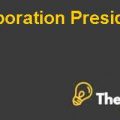
External Environment Evaluation
PESTEL Analysis
A PESTEL analysis is a tool used to evaluate and monitor the macro-environmental factors that have an impact on an organization. The results are used to identify threats and weaknesses which are used in a SWOT analysis, which will be discussed after this analysis (Professional Academy, 2013). These micro-environment forces not only affect the organization, but also other players in the micro-environment.
Political
Political environment can affect a multi-billion dollar e-commerce business through legislations, regulations, tariffs, standards, policies and other laws which can affect the company pricing, profitability and further development of the industry especially when the company is a market leader in the chosen market.
EU (European Union)
The EU has established an E-Commerce directive which has provided a number of regulations that the member states have to abide by. The rules are easy to interpret by the organization and the member states alike. The E-Commerce Directive prevents firms from abusing their market dominance, controls the acquisitions and mergers that help a firm’s growth and prevents firms from colluding by price fixing, cartels and other mutual actions (Jobber, 2007, p. 79). Following is an extract from the EU E-Commerce Directive:
‘The Electronic Commerce Directive, adopted in 2000, sets up an Internal Market structure for electronic business, which offers legal confidence for business and consumers alike. It sets up harmonized policies on matters such as the transparency and online service providers, commercial communications, electronic contracts and limitations of liability of intermediary service providers’ – European Commission (2013).
WTO (World Trade Organization)
In 1998, WTO adopted an E-commerce directive in which the following issues were considered: ‘Classification of the data of several electronic communications development-related matters; fiscal limitations of e-commerce; association (and possible substitution effects) between e-commerce and traditional commerce; obligation of customs duties and taxes on electronic transmissions; rivalry; authority and appropriate law/ other legal issues’ (WTO, 2013).
The WTO has been working towards ‘Trade-Facilitation’ which are ‘efforts to simplify and harmonize international trade procedures’ (WTO, 2013) since the adoption of E-Commerce directive in 1998. Trade regulations are necessary as the major players within the E-commerce are only based in certain countries with international shipping required in other countries. Hence, for the freedom flowing of trade for such instances, various types of regional trade agreements are put in place by the WTO (Radebaugh, Sullivan, & Daniels, 2013, p. 339).
Economic
The economic environment has a serious effect on the performance of companies through its effect on supply and demand. Companies must select those economic factors that are appropriate to their business and monitor them. Both national and international economies have a deep impact on a company’s prosperity (Jobber, 2007, p. 81). Since the recent financial crisis that hit the world in 2008, most of the family incomes declined or stopped all together due to increasing redundancies across the financial markets. Also, the disposable income that most of the e-commerce businesses rely on decreased due to people becoming tight on spending as there was no job security.
Amazon achieved credible growth in the internet retailing industry as growth rates in Asia Pacific is 188% by 2007 to 2012, seeking highly growing market in North America because of the its large population. (Euromonitor International, 2013). This growth aided Amazon incredibly.
Social
Social Networking
With Facebook and Twitter lead the way within social networking, the E-Commerce businesses now have one of the best approach to increase their customer base using advertising and marketing strategies that these two social network websites have to offer. Millions of users can be reached through correct use of these social networking giants and loyalty can be kept intact, without losing customers, at the same time gaining new customers through creative advertisements that Facebook in particular has to offer.
Due to Social Networking, the number of people accessing the Internet has increased at an alarming rate as we can see in Figure 43. Figure 54 shows the way the internet was accessed, with the use of smartphones surpassing the use of work/ institutions’ computers. This shows E-Commerce need to focus more towards the development of Smartphone apps for their company as it can be accessed on the go by customers. Finally, Figure 65 shows encouraging signs that E-Commerce is booming as more people have started to shop online within the comfort of their homes/workplaces. As the population of the world goes up, the number of users of e-commerce will increase accordingly. The countries that a particular e-commerce business operates in having to deal with the demographic forces present within the country along with other cultural forces that drive a particular nation. Amazon caters to every age, gender and even location to gain maximum success within a nation. Also, international shipping proves to be quite profitable for Amazon......................
This is just a sample partial case solution. Please place the order on the website to order your own originally done case solution.
Jeff Bezos, founder and CEO of Amazon.com, online seller, has created one of the most successful e-commerce business on the Internet. With revenue growing at 30% per month, Bezos Amazon.com attributes the success of its value proposition - selectivity, availability, price and service. Despite this, Bezos is facing new challenges in the beginning of 1997 -. Competition from major bookstores Borders, Inc and Barnes & Noble "Hide
by Jeffrey F. Rayport, Dickson L. Louie Source: Harvard Business School 38 pages. Publication Date: March 18, 1997. Prod. #: 897128-PDF-ENG













